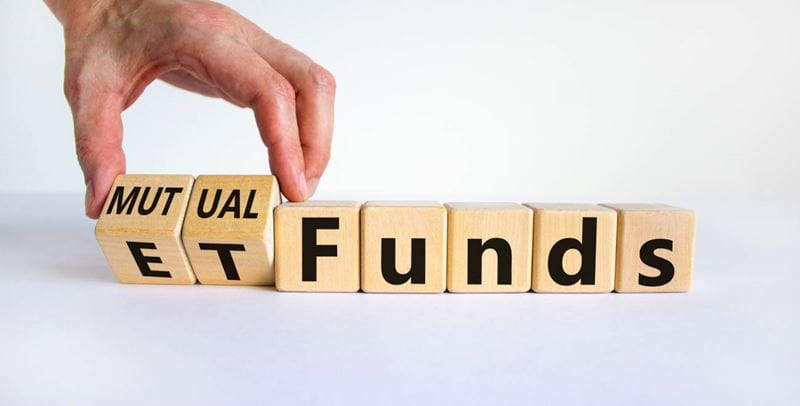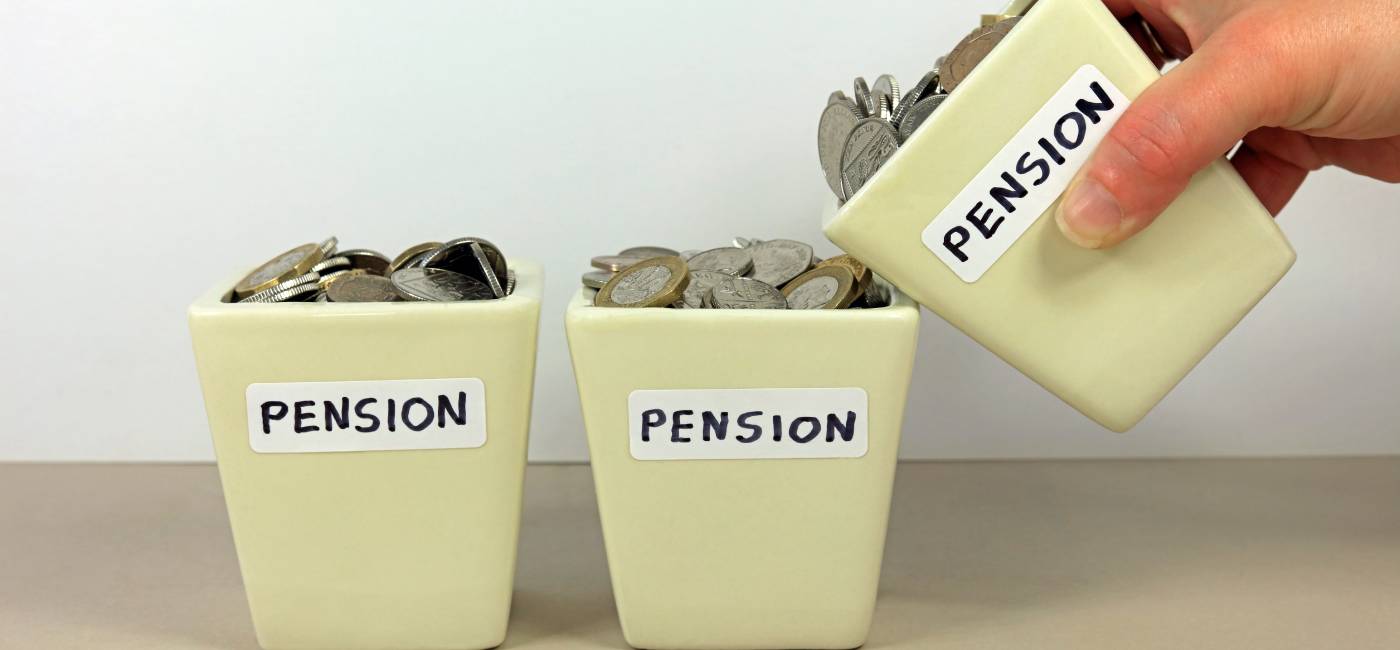
This article is for general guidance only and is not financial or professional advice. Any links are for your own information, and do not constitute any form of recommendation by Saga. You should not solely rely on this information to make any decisions, and consider seeking independent professional advice. All figures and information in this article are correct at the time of publishing, but laws, entitlements, tax treatments and allowances may change in the future.
Ready to start investing but not sure where to begin? You're not alone. There are literally thousands of different options to choose from.
In this second part of our investing for beginners series, we guide you through the various products, so you can make an informed decision and feel confident to begin your investing journey. This guide explains the main types of investments – shares, funds, and more – to help you feel more empowered to invest.
What’s on this page?A good starting point is working out which types of investment to hold. Would you like to invest in, say, shares, or funds that pool together different asset classes? If you’re leaning towards funds, which type of fund would be best for you?
Ilana Miller, investment expert at Royal London, says: “The key is not to get bogged down by the jargon but to focus on what suits your needs – what are your goals? What risks are you willing and able to take?”
You’ve probably heard of shares. These are little slices of companies that are listed on the stock market. When you buy shares, you effectively become a part-owner of the company. Tesco, Rolls-Royce, Amazon, HSBC and BP are some examples of listed companies. There are lots of stock markets all over the world, so you could buy UK shares, or shares in companies overseas.
There are two ways you can make money from shares. First, if the share price goes up after you buy the shares, and you sell them for a profit. Second, while you are holding your shares, you may receive an income in the form of a dividend, which is when a company distributes some of its profits to shareholders.
Shares may feel familiar, if it’s a big household name or a business that you know or understand. However, that doesn’t necessarily mean they will be the best pick for a beginner investor – especially since prices of individual shares are liable to go down as well as up.
Alex Watts, investment fund analyst at Interactive Investor, explains: “As a general rule, less engaged investors without the time to meticulously research individual companies might lean towards funds, rather than shares.”
When you invest, it’s important to hold a diversified mix of investments, so that if one of them doesn’t perform well, you have other investments that can pick up the slack and still provide a positive return. So, if you only invest in shares, you’ll need a larger number of them to provide a decent level of diversification.
This means analysing company reports and spending a lot of time researching which ones to buy – and the best time to sell. It can also work out expensive buying lots of different shares.
You can buy shares on an online trading platform. You’ll usually be charged a platform fee, as well as a trading fee when you buy and sell the shares. The trading fee is often between £3.50 and £12, depending on the platform and how frequently you buy and sell shares. When purchasing UK shares, you’ll also pay 0.5% stamp duty.
A fund is a collection of investments, which could include shares, bonds, property and even gold.
It will either have a geographic focus, such as only investing in UK assets, or looking at Europe or Asia – or it’ll be a “global” fund, meaning it can invest anywhere. Some funds might focus on smaller companies, while others will have a more niche remit, like funds focused on pharmaceutical companies, or transport infrastructure. Or they might focus on sustainable or ethical investing.
A fund manager chooses which investments to buy, and the investor pays a fee for that service. The average annual fee for an actively-managed fund (this is where a fund manager picks the investments) is 0.71%, according to the analyst Morningstar Direct. You can buy funds on an online investment platform and you’ll need to pay any platform fees on top.
Ben Yearsley, director of Fairview Investing, says a fund could be a good option for a beginner investor as it “gives you a broad spread of underlying investments”. He adds: “You could start with a fund that holds say bonds and shares to dip your toe in. Or maybe a global tracker fund to give you broad exposure.”
If you’re wondering what an index fund (also known as a tracker fund) is, this is a type of “passive fund”. In contrast to an “active fund”, where a manager actively looks after the fund, a passive fund literally tracks a market or index closely replicating its performance.
In Yearsley’s example, a global tracker fund will follow the biggest companies in the world, and if they go up in value, your investment will be worth more too. But if they go down in value, your fund holding will also go down.
A big benefit of passive funds is they are much cheaper than active funds – the average annual fee is 0.12%.
However, an active fund could beat the returns of a passive fund, because after all, that is what the manager is trying to do (and what you are paying for).
Just be aware that active funds do not always outperform passive funds, especially if the manager chose an asset that didn’t perform well. “If you have faith that a fund manager will be able to pick investments better than the index over the long term, then perhaps you don’t mind paying a premium for their expertise,” comments Watts.You can use a mix-and-match approach. For example, you could buy a passive fund to track the FTSE 100 (the 100 biggest listed companies in the UK). You might also choose an active fund to invest in Asia, because perhaps an experienced fund manager might have a knack for finding small companies that are likely to become huge, profitable ones.

ETFs are a type of passive fund that is listed on the stock market. This means you can buy and sell ETFs throughout the day and their price will fluctuate. In contrast, a passive index fund only has one set price each day. You may find there is a different minimum investment and different trading fee for an ETF compared to a passive index fund – this is because ETFs are traded like shares on an exchange, unlike traditional index funds.
However, ETFs and passive index funds are very similar, with both of them offering a cheap way to get exposure to a stock market or asset. The average annual fee for an ETF is 0.19%. Experts agree that ETFs are suitable for beginner investors, especially because of their low cost.
The higher the fee, the harder the fund has to work to give you, the investor, a decent return. Lower fees will take a smaller slice out of your returns. If you’re choosing any passive fund, just make sure that you’re happy your money will only follow, rather than beat, the market.
An investment trust is a vehicle listed on the stock market that aims to make a profit from a collection of assets. This means that if you invest, you buy shares in the investment trust. They are similar to funds, and can invest in any region of the world, in any asset class or sector. There are trusts that focus on global technology companies; UK dividend-paying shares; North American companies; property; healthcare; precious metals; and much more.
The share price of the trust can fluctuate, meaning you may pay a higher price than what the investments are worth (called buying at a “premium”). If the share price drops below the value of the investments, it’s known as trading at a “discount”.
Some investment trusts have been around for more than 100 years, and some have a long track record of increasing dividends to investors every year. The average annual fee is 1.21% – slightly higher than ETFs and passive funds – although almost a third of trusts cost less than 1%. Like funds, trusts can be a good option for beginner investors as they offer a diversified mix of investments.
The saying “Don’t put all your eggs in one basket” applies when it comes to spreading the risk of investing. Yearsley recommends beginners have more than one investment, aiming for 10 to 15 over time. “You can keep the same type of structure if you like, so just have ETFs, investment trusts or funds, but I’d have different asset classes or regions within that.”
Ten to 15 might sound overwhelming, but you could start smaller and diversify gradually. Even starting with just two different types of investments (such as a global fund and a UK fund) is better than just one. Or you could choose to have one fund instead, such as a multi-asset fund – these essentially offer ready-made diversification. Miller at Royal London explains that multi-asset fund ranges often offer a choice of low- to high-risk options to align with your needs, and “can be a great way to gain exposure to the markets without the need to research individual stocks and funds”.
She adds: “By taking a well-structured, diversified approach, investors can reduce uncertainty and improve resilience, particularly in later-life financial planning.”
You can buy funds, investment trusts, ETFs and shares on online investment platforms, or via a financial adviser. The latter option could be useful if you have a large amount of money to invest, or you require other services such as inheritance tax planning.
However, you will have to pay an additional fee for advice. You'll need to open an investment account – options include stocks and shares ISAs (which are tax-efficient), general investment accounts, and SIPPs (self-invested personal pensions). Again, it’s always worth remembering that the value of your investment can go down as well as up.
Got a savings goal that’s at least five years away? Investing could be a better way to get there. And in this free Saga Money webinar, at 6pm on Wednesday 5 March, we’ll show you how.
Join Jerry Toher (CEO, Saga Money), Rhiain Curtis (Saga Money) and Dominic Sherry (HUB Financial Solutions) for a fun and informative look at how:
The value of your investments and any income received can fall as well as rise. You may not get back the amount you invested.


With our Stocks & Shares ISA and General Investment Accounts. Capital at risk.

Learn how to combine pensions and whether it's worth it.


Find out how to check your credit score and how to improve it. This guide covers everything from checking your report to boosting your rating.

If you have gaps in your National Insurance record, find out how to make payments to increase your state pension.
